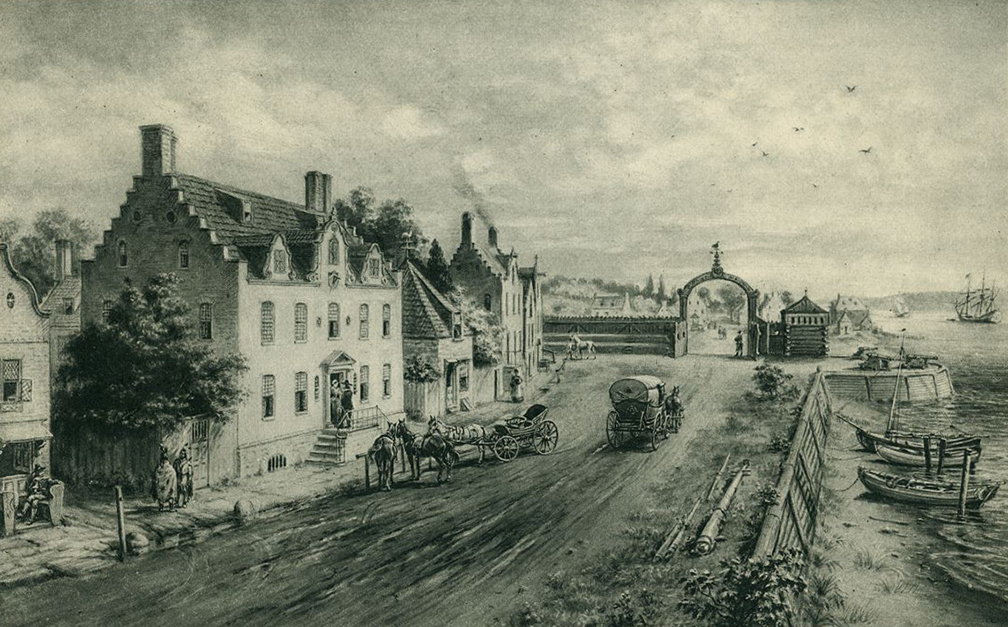Pirates Were People, Too
June 6, 2017

In late March 1717, as part of a gang of nearly 250 pirates who’d spent the year raiding ships in the Caribbean, Captain Paulsgrave Williams sailed north up the coast of New England in the Marianne, a blue-and-yellow-painted sloop.
Detouring from the planned rendezvous point, Williams sailed home to see his mother and sisters. Meanwhile, his partner’s ship was caught in a storm and wrecked on the Cape Cod shore, killing all but two of its 144-member crew.
The incident captured the imagination of Daphne Palmer Geanacopoulos (English ’79), who became interested in pirates while researching a story for The New York Times about the Whydah Pirate Museum in Provincetown, Massachusetts. After transcribing more than 250 documents and identifying 80 pirates who were married, she wrote a book, The Pirate Next Door: The Untold Story of Eighteenth Century Pirates’ Wives, Families and Communities, published by Carolina Academic Press in November 2016.
“I developed a more complete and nuanced history of piracy and discovered that the lives of pirates, while indeed colorful, were often quite different from those of their literary and cinematic counterparts,” Geanacopoulos said.

Here are five things Geanacopoulos learned while writing The Pirate Next Door:
1) Pirates didn’t ordinarily fly the Jolly Roger, the black skull-and-crossbones flag.
“Pirates didn’t go around with that flag up all the time. They only hoisted it when they attacked. Pirates carried flags from all nations to fool merchant ships. Just before they approached, they’d hoist their Jolly Roger. A smart merchant captain would immediately surrender.”
2) Many captains customized their own versions of the Jolly Roger.
“Each pirate captain designed his own flag, somewhat like personalized stationary, and there were 15 to 20 different flags. Some captains flew the traditional skull and crossbones; others flew a skeleton with a heart.”
3) Pirates had their own mail system.
“The pirates’ ‘post office’ was under a large rock with a hole in it located near where the ships came in on Ascension Island, a small remote island in the South Atlantic. New York Merchant captains trading with the pirates in Madagascar dropped off and picked up the pirates’ mail on Ascension Island on a regular basis.”
4) Pirates maintained a highly developed code of honor.
“People think pirates were just cutthroat thieves, but they were a very close brotherhood. If a pirate was killed in action or died from disease, a fellow pirate would smuggle the victim’s share of the booty halfway across the world to return it to his wife and family or next of kin.”
5) The wives of pirates were intensely loyal, strong, and independent.
“The wives didn’t always know their husbands were pirates. When they left port, they could have been ordinary sailors who turned pirate at sea. But the loyalty of these women is what I saw in their letters. I also saw that they suffered greatly because their husbands were gone for so long. There was an organization to protect and take care of Navy wives, but these women were on their own, trying to survive.”
This story originally appeared in the Spring 2017 issue of Virginia Tech Magazine.







